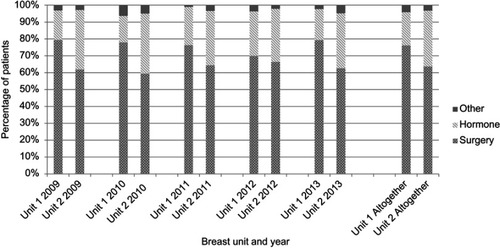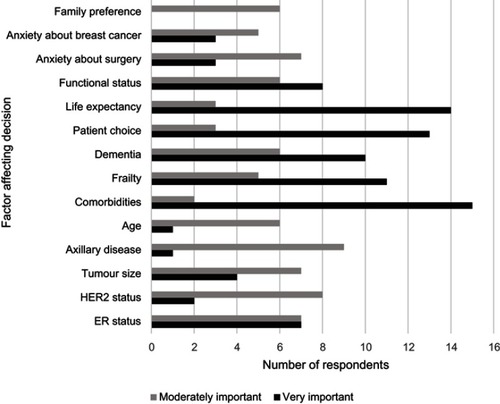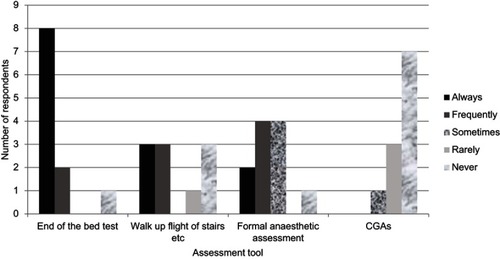Figures & data
Figure 1 Proportion of patients in each unit who received surgical treatment, endocrine therapy only or other treatment modality, by year of diagnosis. Difference in rates of surgery: 2009 p=0.007, 2010 p=0.005, 2011 p=0.075, 2012 p=0.430, 2013 p=0.016, altogether p<0.0001.

Table 1 Pathological characteristics of breast cancers and SIMD quintile of patients treated within each unit
Table 2 Distribution of Charlson Comorbidity Index scores for patients who underwent surgery in each unit
Figure 2 Responses of health professionals in each unit to the statement: (A) “surgery is superior to PET in elderly patients”; n=15, p=0.092. (B) “surgery under general anaesthetic (GA) is generally safe in elderly breast cancer patients”; n=16, p=0.002. (C) “I would be happy to perform wide local excision under local anaesthetic for an elderly patient deemed high risk for GA”; n=7, p=0.118.

Figure 3 Factors considered by health professionals in both units to be “moderately” or “very important” in determining whether an elderly patient undergoes surgery.


